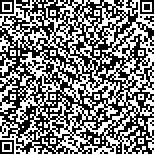汤从智,蔡倩,杨玺,等.经颅直流电刺激介入任务导向性训练对脑卒中患者上肢功能障碍的影响[J].中华物理医学与康复杂志,2019,41(8):570-574
扫码阅读全文

|
| 经颅直流电刺激介入任务导向性训练对脑卒中患者上肢功能障碍的影响 |
|
| |
| DOI:DOI:10.3760/cma.j.issn.0254-1424.2019.08.003 |
| 中文关键词: 经颅直流电 脑卒中 阳极 上肢 任务导向性训练 |
| 英文关键词: Transcranial direct current stimulation Stroke Upper limbs Task-oriented training |
| 基金项目:江苏省卫生和计划生育委员会科研课题资助项目(MS201509);济宁医学院实践教学教育科学研究课题(JYSJ2017A04) |
|
| 摘要点击次数: 6030 |
| 全文下载次数: 6173 |
| 中文摘要: |
| 目的 观察在任务导向性训练的不同时间点(训练前和训练过程中)进行经颅直流电刺激(tDCS)对脑卒中患者上肢功能障碍的影响。 方法 选取符合标准的脑卒中患者90例,采用随机数字表法将其分为A组、B组和C组,每组患者30例,3组患者均进行上肢任务导向性训练,A组患者在任务导向性训练前给予患侧大脑半球M1区20 min的tDCS治疗,tDCS治疗每日1次,每次20 min,每周治疗5 d,连续治疗4周;B组患者在任务导向性训练的同时给予tDCS治疗,tDCS治疗部位和参数同A组;C组患者则在任务导向性训练的同时给予安慰性刺激。于治疗前和治疗4周后采用Fugl-Meyer功能评分上肢部分(FMA-UE)、偏瘫上肢功能测试-香港版(FTHUE-HK)和改良Barthel指数(MBI)分别评估3组患者的上肢运动功能、上肢功能性和实用性以及日常生活活动能力。 结果 治疗4周后,3组患者的FMA-UE评分、FTHUE-HK评级和MBI评分较组内治疗前均显著提高,差异均有统计学意义(P<0.05);治疗4周后,B组患者的FMA-UE评分、FTHUE-HK评级和MBI评分分别为(40.57±7.66)分、(4.33±0.76)级和(66.67±9.72)分,显著优于A组和C组治疗4周后,差异均有统计学意义(P<0.05)。 结论 tDCS联合任务导向性训练可显著改善脑卒中患者的上肢运动功能和日常生活活动能力,且在任务训练的同时进行tDCS疗效更佳。 |
| 英文摘要: |
| Objective To investigate the effect of transcranial direct current stimulation (tDCS) before or during task-oriented training on the upper limb dysfunction of stroke survivors. Methods Ninety stroke survivors were randomly divided into groups A, B and C, each of 30. Those in all the three groups received the same task-oriented training, but those in groups A and B received 20 minutes of tDCS of the M1 area of the cerebrum before and during the task-oriented training respectively. Group C was given placebo stimulation during the task-oriented training. The Fugl-Meyer functional upper limb assessment (FMA-UE), a Hong Kong hemiplegia upper limb function test (FTHUE-HK) and the modified Barthel index (MBI) were used to evaluate the outcomes before and after 4 weeks of treatment. Results After 4 weeks of treatment the average FMA-UE, FTHUE-HK and MBI scores of all three groups were significantly better than those before the treatment. Group B′s average scores were significantly better than those of groups A and C. Conclusion tDCS significantly enhances the benefits of task-oriented training after stroke. |
|
查看全文
查看/发表评论 下载PDF阅读器 |
| 关闭 |